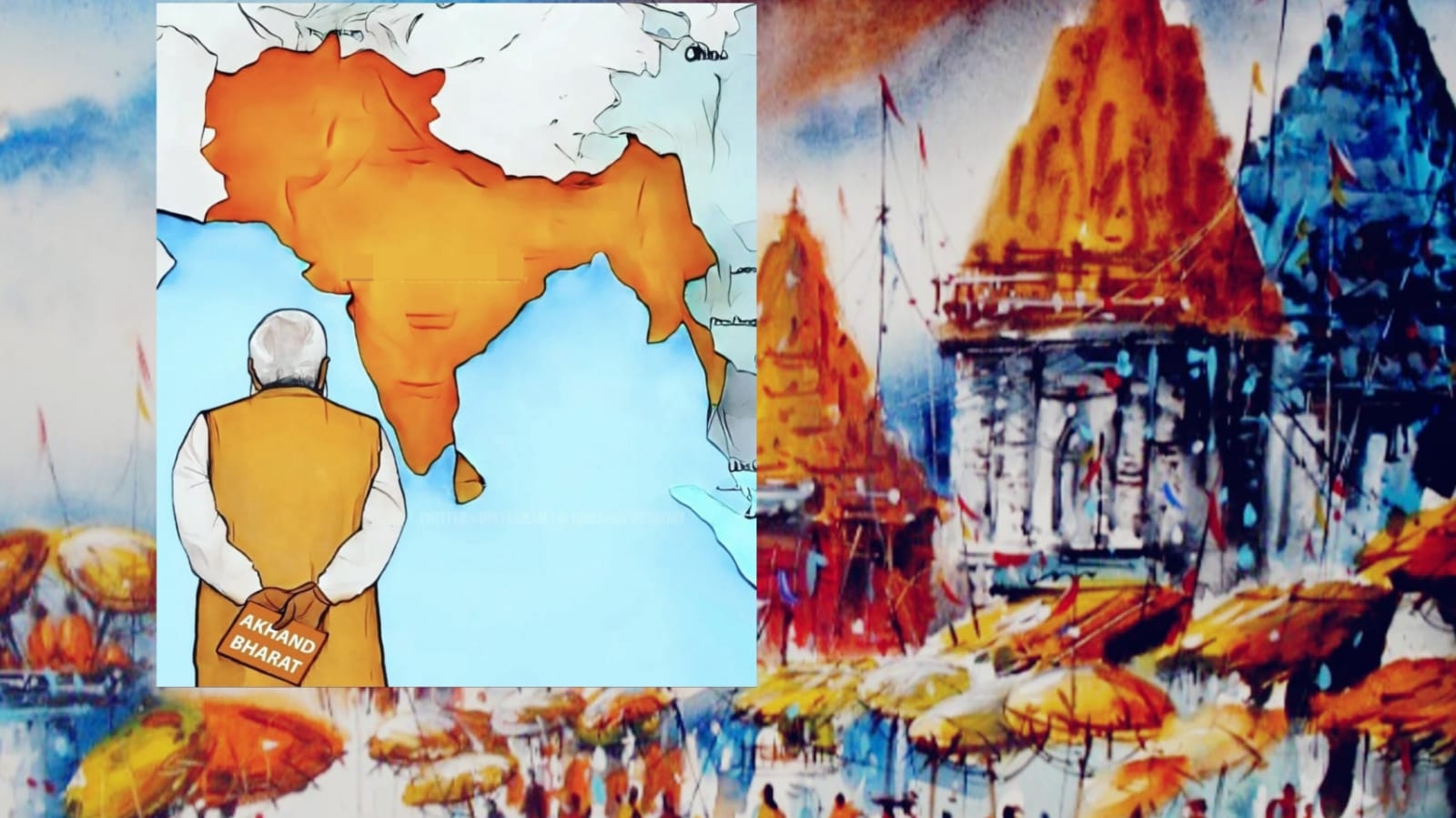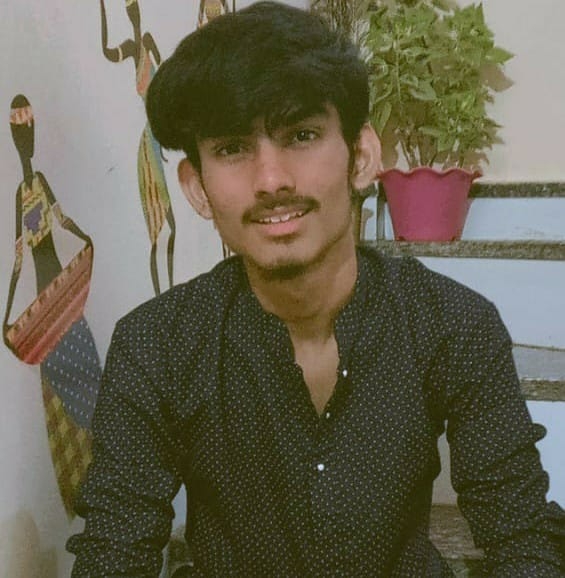Footprints of Indian culture: Invasion , Revival |The Enigma Explained|
25 Jan 2023 17:56:16

Culture is a set of shared attitudes, values, goals and practices that characterize a civilization. It is an umbrella term which encompasses the social behavior and norms rooted in human societies. Culture confers the identifications to the individual or society. Perennially, civilization is the summarized learning of the culture and it’s various semblance engendering to development through social classification; Example – cities, temples houses.
The process of cultural build out in India has not taken place because of any one culture, credo and social aspect. It has taken its place through different people in different ways and in this process some people espoused the Indian culture or the sanatani culture and some denied it. And if we behold the footprints of time than from ancient period ,many invaders and tribes came and invaded India. Indo Greeks, Shakyas, Parthians, Kushanas, who either came along with the “Sanatan Sanskriti “ or eventually embraced it. For instance, Kanishka gave his preferences to Buddhism meanwhile his successor Huvishka coined the four handed Vishnu in his currency. In the same way Kushan rulers coined the Shaivya deities. Which indeed signifies that these dynasties adopted or aligned themselves with the Sanatan culture?
“But on the other hand the Muslim invaders who came to India never gave credence to the Sanatan culture. And embarked a peculiar culture parallel to the one followed , and in order to make the Islamic culture fluent they wrangled with their own beliefs. And the Hindus who were converted to Muslims brought up uncommon practices which were identically similar to Sanatan Culture. For instance, Women in Arab do not wear bichhiya (toe ring) but the Indian Muslim women do.”
And there’s also a similarity between the folk songs sung in Hindu marriages and Muslim marriages, likewise the folk songs sung in Hindu marriages are also sung in Muslim marriages. Therefore, the conversions (either by force, bait or any other means) which took place on the stakes of culture weren’t able to suffice the cultural structure of the newly turned Muslims ; the newly turned Muslims weren’t able to forget their initially rooted culture. Now in this division of newly converted Muslims a peculiar branch emerged who copied the Muslims of Iraq , Arab. And by copying them, they tried to bring more fanaticism in India. To sound ‘more Muslim’ they shifted their dialects from Urdu to Arabic and Persian.
By that very fact, Muslims can be seen struggling while maintaining or building their own identity as a Muslim. Therefore they weren’t able to amalgamate with the Indian Culture.
In the same way, when Christian missionaries started coming to India, they brought up their own culture and tradition with them. Christians or Europeans believed that Asians are illiterate and have barbarous persona, and this conception of their benightedness is termed as “White men burden theory “ terming that Europeans are superior to Asians.
In order to be of different paths and be supreme in itself Muslim invaders and Christian communities try to encroach and invade the Sanatan culture and its practices also comprising Jain and Buddhism culture in it, causing contends within the certain aspects. And the more we comprehend this period of struggle than we can conclude that it’s the beauty of the Indian culture, that it managed to whip up all cultures together. But ironically a section of the Muslim community do not seems to be very much convinced with it. Therefore there's always a visible cultural and social strafes between the two aspects. Before they used to follow the Khalifa of Misra , Turkey, Iran , Iraq and these days the Saudi Arabia appears to dominate their superiority over Muslims as of the political power possessed by them in International relations and the like presence of the Muslim pilgrimage sites such as Mecca and Medina. Therefore a section of Indian Muslims precisely copy Saudi Arabia in terms of food, clothing, lifestyle etc.
As the many invaders, invaded India by force and sword in the medieval times earlier many Indian Kings also expanded their kingdom ahead of their fortified land though their expansion was only through the means of their rich heritage of spiritual knowledge and certain Vedic philosophies which still hold its significant in terms of Humanity and prosperity of the all humankind, undoubtedly this brief period of the History can be termed as the pinnacle of the great Sanatan culture.
Indeed Indian culture is one of the most prosperous culture across the globe, and Europeans also agree with this fact. They say, that if someone taught them humanity than it’s Indians and the Sanatan culture.
Cholas annexed Java, Sumatra, Malayatan ; Maldives and captured Sri Lanka towards south. And this led to the growth of Buddhism, Hinduism in this region ; Also enabled the routes for Indian trade , admiration of Indian Music and food from the foreign lands. Due to this, a mere identical Indian culture can be found in western China , Japan, Indonesia, Sri Lanka. And because of these cultural identifications the southern Asia (excluding Maldives and Mauritius) is called as Indian subcontinent, not on political basis but due to cultivated cultural aspects. And by virtue of the cultural influence in these regions their society is very much identical to Sanatan culture, and religion played a major role in it. The religions which are accountable for this cultural resemblance are Shaivya , Vaishnav (as Hinduism) , Jainism and Buddhism which do have a varied course from Vaishnav and Shaivya but are identical to Sanatan culture.
Jains have had their own limits, as they do not travelled using any means of transport so they could not go overseas and trudge mountains. That’s why there is no visible presence of Jains in such regions which do not have conducive geographical conditions. There were no such religious limitation on Buddhists therefore can be seen spread visibly far. During the time of Pallavas and Cholas the advocacy of Hinduism spread from India to far ahead. The Ankorwat temple in Indonesia is the height of its glory, besides this , the traces of Hinduism can be seen from the ancient periods. Hindu deities Ganesh and Lakshmi can be found on the Indonesian currency notes.
Their Airways is “Garuda”(which’s again a Hindu deity). And in their whole social structure Hinduism can be termed as influent, despite of the fact that Indonesia is the 4th largest Islamic nation. Buddhism was spread in Sri Lanka from India. You will find many such examples of the cultural specialty of India from the time of Mauryas and later also expanded to different places outside India. And on this point of fact , RSS also believes that these places too possess our Sanatan culture. And this is why the idea of “Akhand Bharat” , the intact perpetual India is such fluent in India’s socio-political structure of India.
Now the foremost aim of our was that the expansion which took place on the stakes of culture —should be unified again as “Bharat” and this can be done by arranging a exchange of cultures , comprising literature, music, religion. And this cultural similarity will unbar the political boundaries among nations under the umbrella of “Bharat”. This cannot happen in a day neither we can assure that cannot happen in a century, but surely, if this continues than the nations sharing Sanatan culture can be unified again with the threads of tricolour. And not just us , but our neighbors too will accept and acknowledge the sublime past we shared and will continue to share.

(Kewali Kabir is a sophomore and a social environmental prospector, contemplating society and politics through cultures.)